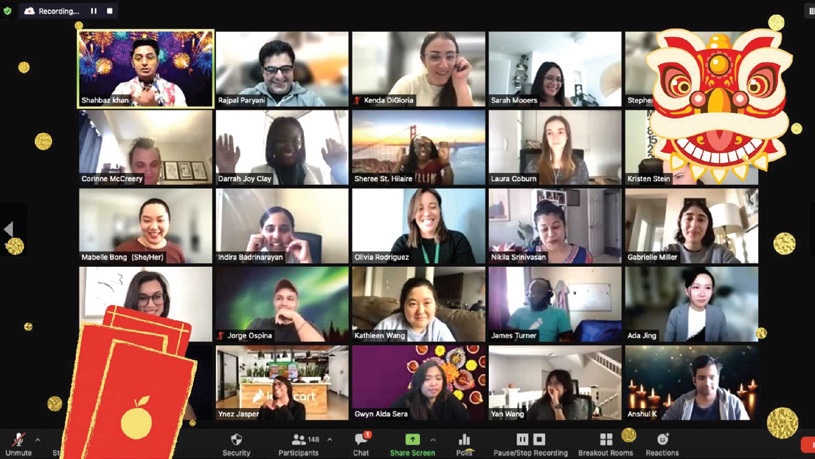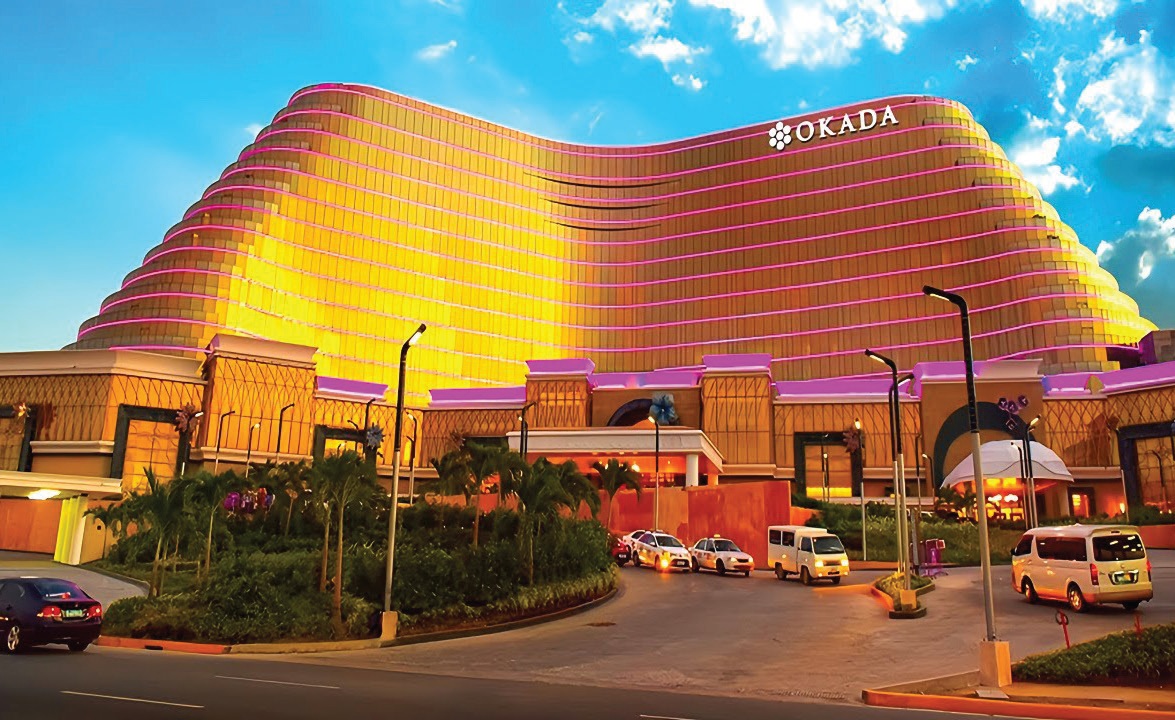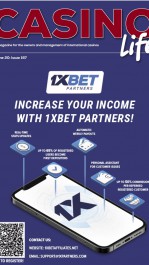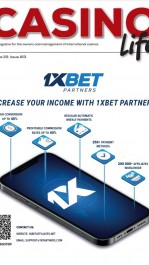Casinos tap mobile-first audiences with social platforms driving revenue and loyalty.. By Shaun McCamley
The global gaming industry has experienced a remarkable transformation over the last two decades. This has been fueled by advances in mobile technology, evolving consumer behavior and the rise of digital entertainment platforms.
Within this landscape, social gaming has emerged as a distinct and rapidly expanding sector. It is particularly relevant in Southeast Asia, where mobile-first engagement, a youthful population and a burgeoning middle class create the perfect environment for non-wagering entertainment.
Social gaming encompasses free-to-play digital games that often feature casino-style mechanics like slots, card games and bingo, designed primarily for entertainment rather than gambling. Although players can buy virtual coins or assets, they are unable to cash out any winnings. This business model has thrived worldwide and is now entering a crucial phase of strategic significance across Southeast Asia.

Understanding the Social Gaming Model
At its core, social gaming combines the engagement mechanics of real-money gambling with the accessibility of mobile gaming. It generates revenue primarily through two channels:
• In-app purchases (IAPs): Players buy virtual currency or items to enhance gameplay.
• Rewarded ads: Users watch ads in exchange for game credits or bonuses.
Key benefits for operators include:
• Low regulatory risk: No real-money payouts mean social-casino games are usually outside gambling legislation.
• Scalability: Platforms can be deployed and expanded rapidly across jurisdictions.
• Data ownership: Operators gain valuable insight into player behavior, allowing them to tailor future offerings.
Why Social Gaming Matters for Casino Operators
1. Unlocking the 80 percent who don’t gamble
Land-based casino operators typically focus on gaming floors, yet data shows that up to 80 percent of property visitors do not engage in wagering. Social gaming provides a bridge to this untapped audience by offering engaging, brand-aligned entertainment that’s accessible from anywhere.
2. Extended brand engagement
Social-gaming platforms maintain guest relationships beyond the physical resort's confines. This enables:
• Year-round interaction with customers.
• Digital loyalty programs.
• Cross-promotions for hotel stays, events and merchandise.
3. Monetisation without risk
Unlike real-money gaming, social platforms generate revenue without risk of capital loss to players. The result is a win-win model: Operators earn through IAPs and ads, while players enjoy stress-free gameplay.
4. Testing ground for online gaming
For jurisdictions where online wagering remains prohibited or tightly regulated, social gaming provides a legal, strategic foothold. Operators can:
• Build digital infrastructure.
• Grow a database of engaged users.
• Prepare for a regulated future.
The Southeast Asia Advantage
Southeast Asia represents a unique growth frontier for social gaming due to:
• Demographics: A young, mobile-first population.
• Digital payments: Increasing use of e-wallets and mobile banking.
• Tourism: Casino resorts can utilize social gaming to enhance guest engagement beyond the visit.
Markets such as the Philippines, Vietnam, Malaysia and Thailand are showing early signs of adoption. Cambodia and Laos are expected to follow suit as mobile penetration increases.
Regional Snapshot: The Philippines, Thailand and Vietnam
In the Philippines, social gaming is gaining momentum thanks to a progressive regulatory framework, widespread smartphone adoption and a strong domestic gaming culture. State regulator PAGCOR’s tolerance of social platforms enables land-based operators to experiment with digital entertainment solutions that extend beyond real-money gaming. Integrated resorts in Manila and Cebu are increasingly exploring branded social ecosystems to capture long-tail guest engagement, and to improve digital loyalty metrics.
Thailand, while lacking legal real-money casino gaming, is a fertile ground for social platforms. With over 90 percent smartphone penetration and a digital-native population, Thailand’s consumers are highly receptive to entertainment-based gaming apps. Social casino games, puzzles and instant-win games are already enjoying viral traction. Operators looking to enter the Thai market through social gaming can build brand affinity and collect valuable user data without violating gaming laws.
Vietnam represents a compelling mid-term opportunity. The government has shown cautious openness to regulated gaming through pilot casino programs and evolving legislation. While real-money iGaming remains restricted, social gaming currently exists in a regulatory grey area, permitting international platforms to operate without interference. A rising middle class, surging smartphone usage and cultural familiarity with gaming make Vietnam an ideal candidate for social-gaming investment. Local partnerships and culturally adapted content will be key to market success.
Case Studies and Industry Leaders
The Playtika story: From $92 million to $4.1 billion.
One of the most striking examples of the strategic and financial potential of social gaming is the rise of Playtika. In 2011, Caesars Entertainment acquired the Israeli startup for $92 million, aiming to bolster its digital growth through Caesars Interactive Entertainment. Over the following years, Playtika surpassed expectations, becoming a significant revenue generator with hits like Slotomania and House of Fun.
By 2016, just five years after its acquisition, Caesars sold Playtika to a Chinese consortium led by Giant Interactive for an impressive $4.1 billion. This remarkable return on investment highlighted not only the rapid growth and profitability of social gaming but also sent a clear message to the entire industry: Social platforms are no longer just marketing tools; they are highly valuable digital assets in their own right.
Aristocrat and Light & Wonder
These two leading slot manufacturers have built billion-dollar, B2C, social-casino businesses – Aristocrat’s Product Madness and Light & Wonder’s SciPlay – demonstrating the viability of this model. Both companies use social platforms to:
• Test new game concepts.
• Build global brand equity.
• Generate significant non-wagering revenue.

Integrated Resorts in the Philippines
Operators in Entertainment City, such as Hann Casino Resort and Nustar Resort & Casino, are exploring branded social platforms as a way to:
• Retain high-value tourists.
• Engage non-gambling visitors.
• Provide family-friendly alternatives.
Why Many Southeast Asian Casino Operators Are Set up to Fail Online
Despite the clear advantages, many Southeast Asian operators are failing to capitalize. Why?
1. Misaligned organizational structures
Social gaming success depends on product development, digital marketing and live operations expertise—not simply branding or retail functions. Many operators assign digital strategy to departments that lack technical or online-gaming experience.
2. Short-term thinking
Rather than investing in a long-term platform strategy, some choose quick-turn, white-label options that:
• Limit brand control.
• Restrict player-data access.
• Offer little in the way of innovation.
3. Lack of KPI understanding
Key performance indicators such as:
• LTV (lifetime value)
• ARPU (average revenue per user)
• CAC (customer acquisition cost)
... are often unfamiliar to land-based management. Without these metrics, it’s impossible to evaluate platform performance or ROI.
4. Underestimating the digital mindset
Digital platforms operate at a different pace than traditional businesses, emphasising continuous testing, quick iterations and immediate customer feedback. Those who overlook this fact often struggle to craft engaging player experiences.
5. No clear product ownership
Social-gaming initiatives are frequently added as an afterthought to current marketing or IT roles. For these initiatives to thrive, it’s crucial to have a dedicated product owner who is empowered to foster continuous improvement and facilitate collaboration across different teams.
6. Inadequate budgeting for growth
Successful social platforms require initial marketing investment and ongoing budgets for user acquisition, retention campaigns, and content development. Many casino groups underfund these areas, expecting organic traction without a strategic push.
7. Missed first-mover advantage
Hesitation or delay means competitors gain valuable lead time to refine product-market fit, build user bases and establish brand loyalty. For regions where regulation is silent, fast movers stand to define the space.
Strategy Blueprint: How to Win in Social Gaming
For land-based operators in Southeast Asia, the following strategic steps are critical:
1. Internal alignment
• Appoint a digital lead with experience in online gaming.
• Define social-gaming objectives: revenue, engagement or brand building?
2. Partner selection
• Select a B2B platform partner that offers flexibility and proven content.
• Ensure full access to analytics and monetization tools.
3. Brand integration
• Use custom design to reflect the look and feel of your physical property.
• Integrate reward points, events and resort branding.
4. Marketing and community
• Launch with a strong promotional push across digital and on-site channels.
• Build a community via contests, leaderboards and VIP perks.
5. Analytics-driven optimization
• Monitor LTV, retention, ARPU and churn.
• Run A/B tests on offers, features and design.
• Adapt based on data, not intuition.
6. Leverage emerging technology
AI-driven personalisation, dynamic in-game offers and gamified loyalty extensions are reshaping social gaming. Augmented reality (AR) and metaverse integrations are also opening new frontiers in player immersion. Southeast Asian operators who invest in these tools can leapfrog competitors.

Regulatory Considerations
Social gaming generally avoids gambling classifications, but gray areas can exist. Key points include:
• Avoiding mechanics that resemble wagering.
• Transparent disclaimers (no real-money winnings).
• Age verification and responsible-play messaging.
Countries like the Philippines are tolerant of social gaming. Others, such as Thailand and Vietnam, are silent, thereby creating opportunities for first movers.
The Sweepstakes Model: How it Works and Why it’s Popular
Sweepstakes-based gaming has become a popular segment within the social-gaming landscape, particularly in the United States and Latin America. It is now gaining traction in Southeast Asia. Unlike traditional social gaming, these sweepstakes models utilize a legal loophole that allows players to win real-world prizes, including cash, without needing a gambling license.
How Sweepstakes Gaming Works
The model is typically structured around two virtual currencies:
• Gold coins: Used for standard gameplay with no real-money rewards.
• Sweepstakes coins (or sweeps): Earned through free mail-in entries or bundled with purchases of gold coins, these can be used in games that offer the chance to win real cash prizes.
Once players accumulate winnings through the sweepstakes games, they can redeem those virtual winnings for real-world money, gift cards or other prizes. Crucially, the inclusion of a free-entry method ensures compliance with sweepstakes laws in many jurisdictions, keeping the platform outside the scope of real-money-gambling regulation.
Why it’s so Popular
1. Regulatory accessibility: Because sweepstakes platforms do not require gambling licenses, operators can launch quickly and scale across regions with restrictive gaming laws.
2. Player appeal: The chance to win real-world rewards, without risking money in the traditional gambling sense, adds excitement and value for users.
3. Marketing versatility: Sweepstakes models are ideal for user acquisition through promotions, giveaways and influencer campaigns.
4. Revenue model: The sale of virtual coins provides a monetization path while maintaining legal compliance. Some platforms also integrate rewarded ads and loyalty programs.
Sweepstakes platforms like Chumba Casino and Global Poker have demonstrated the model’s success. They are generating strong revenues, and expanding player bases by appealing to both casual and competitive players. For Southeast Asian operators, adopting or integrating a sweepstakes mechanic could be a way to future-proof platforms while offering increased engagement and monetization potential.
Monetization Models in Practice
A mature social gaming platform can earn revenue from multiple streams:
Revenue Stream Description
In-app purchases: Players buy virtual currency/
items.
Rewarded video ads: Users watch ads to earn
bonuses.
Offerwall: Players complete surveys or offers.
Sponsorships: Brands advertise via themed events
or items.
Profit margins are typically high, ranging from 30 percent to 75 percent, especially when accompanied by strong user retention and frequent in-game purchases.
The Competitive Landscape
Although the space is growing, few operators in Southeast Asia have made decisive moves. This presents a golden opportunity for:
• Early adopters to build digital audiences.
• Suppliers to tailor solutions for regional needs.
• Investors to capitalize on an underdeveloped market with high margins.
What the Future Holds
As regulatory environments evolve and digital entertainment continues its rise, expect the following trends:
• Hybrid models: Real-money operators launching social arms and vice versa.
• Cross-vertical platforms: Integration with e-commerce, loyalty and event ticketing.
• Regional regulation: Frameworks may emerge to govern or license social platforms.
• Platform consolidation: Expect M&A activity, as successful platforms gain scale.
• Gamified loyalty ecosystems: Casinos will embed social platforms into broader guest-engagement strategies.
• Player behavior analytics: Advanced analytics will become essential to understanding drop-off points, churn predictors and top-spender behaviors. Tools that visualize these insights will empower better retention and monetization decisions.
Expanding the Player Journey through Personalization and Retention
To transform social gaming from a passing trend into a reliable revenue source, operators need to focus on optimizing the player journey. This involves analyzing engagement patterns and utilising real-time data to create customised experiences. By employing advanced segmentation strategies based on players’ spending habits, session durations, and favorite content types, platforms can offer highly targeted promotions and bonuses.
For instance, the onboarding experience for new users should be distinct from that of returning players. Welcome rewards, tutorial guidance and initial game recommendations should smoothly introduce users to the platform while also encouraging early microtransactions. Mid-tier players typically respond well to incentives tied to their progress, social competitions and seasonal events. VIP players expect exclusive tournaments, personalised support and recognition programs.
Additionally, implementing AI-driven prediction models can help spot potential churn risks, enabling operators to proactively present re-engagement incentives like bonus currency, limited-time items or tailored in-app notifications. It’s essential that retargeting efforts through email or push notifications align with behavioral triggers to maximize effectiveness without overwhelming users.

Enhancing Player Retention through Social Features
Enhancing player engagement goes beyond just offering individual rewards and personalized experiences. Integrating social features can significantly boost player retention. Elements like leaderboards, gifting systems and real-time multiplayer challenges help cultivate a sense of community. When players feel socially connected to the platform – whether through competition or collaboration – they’re much more likely to keep coming back.
Furthermore, establishing clans, clubs or guilds can form small communities where players can progress together and earn collective rewards. These dynamics encourage daily logins, extend session lengths and improve overall retention rates. Additionally, operators should think about implementing moderated chat systems or using emojis to promote communication while ensuring a safe and inclusive environment.
The Role of Seasonal Events and Live Operations
Live operations – such as time-sensitive challenges, festivals, or mini-games – play a crucial role in maintaining user engagement. These events generate a sense of urgency and excitement, enticing both paying and non-paying users to return to the ecosystem. When tied to holiday themes or local cultural celebrations (like Lunar New Year or Songkran), they can lead to significant increases in revenue and participation.
To successfully run live ops, teams should develop content calendars, establish update pipelines and track event KPIs in real time. An effectively managed live-ops cycle keeps the platform feeling fresh and engaging, even for veteran players. Additionally, these events can serve as informal A/B testing grounds for introducing new features or monetization strategies.
Expanding into Influencer and Affiliate Ecosystems
As the social gaming-industry evolves, influencer and affiliate marketing are set to play a more significant role. Content creators with gaming followings can help boost new-platform launches, promote in-game events or run exciting giveaways. Affiliates, particularly in Southeast Asia’s mobile-centric markets, already play a crucial part in helping users discover new apps.
By offering unique bonus codes, referral rewards and affiliate dashboards with real-time performance tracking, platforms can scale their user-acquisition efforts. When influencers are woven into the gaming experience through avatars, branded items or co-branded challenges, they make the transition from mere promoters to integral parts of the in-game universe.
Combining performance marketing with community engagement allows social gaming platforms to connect with younger audiences and tap into niche subcultures more effectively than traditional advertising ever could.
To transform social gaming from a passing trend to a sustainable revenue stream, operators need to focus on optimizing the player journey. This entails understanding engagement patterns and using real-time data to personalize experiences.
Implementing sophisticated segmentation strategies – driven by factors like spending habits, session lengths and preferred content types – enables platforms to deliver precisely targeted offers and bonuses. For instance, the onboarding process for new users should differ from that of returning players. Welcome rewards, tutorial support and game suggestions should be designed to smoothly integrate new users while encouraging early microtransactions.
Mid-tier players gain from progress-based incentives, social competitions and seasonal events. High-tier users expect exclusive tournaments, dedicated support and recognition programs. Utilizing AI-driven prediction models can help identify users at risk of churning and proactively offer re-engagement incentives, such as bonus currency, limited-time items or personalized in-app messages. Additionally, retargeting through emails or push notifications should align with user-behavior triggers to maximize effectiveness without overwhelming customers.
Conclusion: Social Gaming is not Optional — It’s Essential
In a world where digital engagement drives value, social gaming offers:
• A monetizable touchpoint with non-gambling audiences.
• Year-round brand interaction.
• Strategic positioning for future online expansion.
Casino operators who ignore this channel risk falling behind as competitors build databases, engage younger audiences and strengthen digital brand equity. Southeast Asia is ripe for disruption. The question is: Who will move first and who will be left behind?































